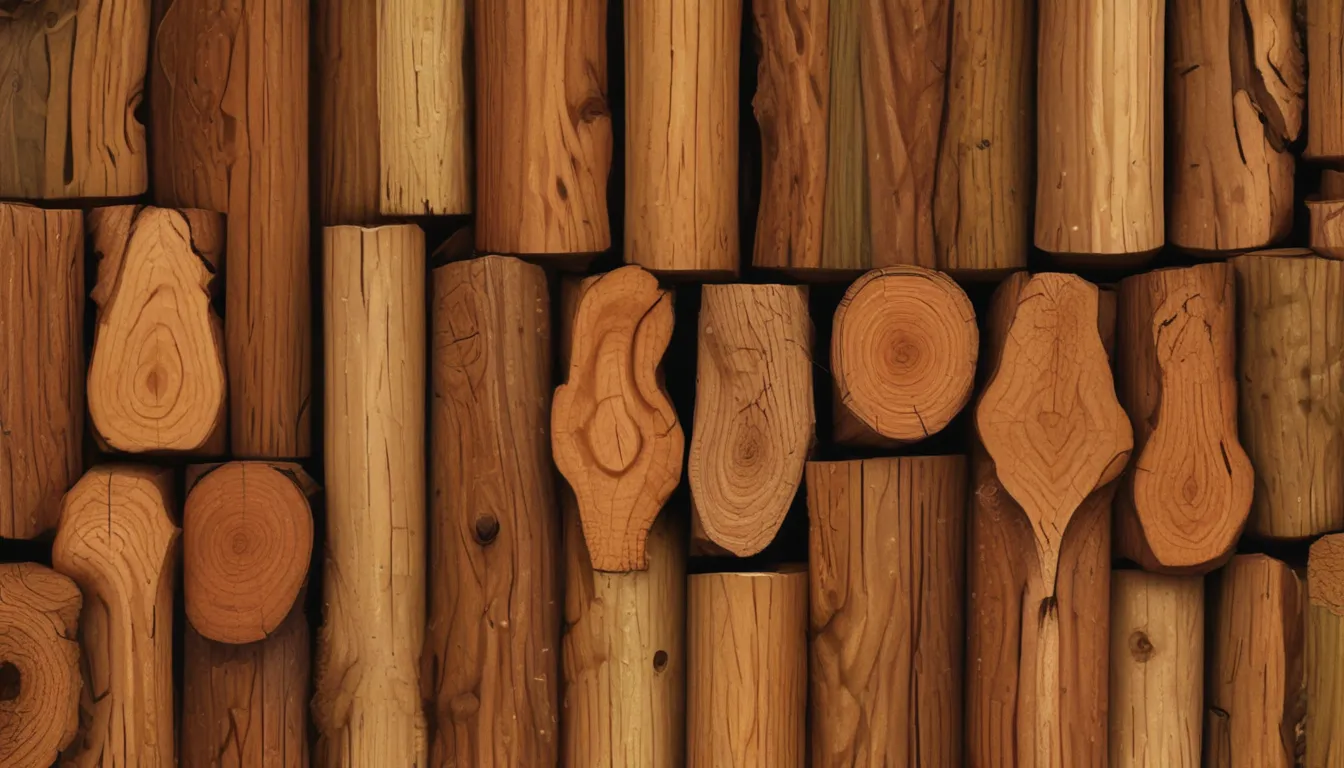The pictures we use in our articles might not show exactly what the words say. We choose these pictures to make you interested in reading more. The pictures work together with the words but don’t take their place. The words still tell you the important facts.
Are you looking to embark on a woodworking project and are unsure about where to start? Understanding the different types of wood available is crucial in ensuring the success of your endeavor. From hardwoods to softwoods, and even engineered wood, each type has its unique characteristics and uses. In this comprehensive guide, we will explore the diverse world of wood, providing you with valuable insights to help you make informed decisions for your next woodworking project.
Unraveling the Mysteries of Wood Types
Wood comes in various forms, each offering a distinct set of features that cater to different project requirements. While dimensional lumber, such as 1 by 2, 1 by 4, 2 by 2, 2 by 4, and 4 by 4 wood, is a common choice for many, there are also other sizes and varieties available for those seeking something more unique. Understanding wood grains, such as flat grain, straight grain, and curly grain, allows for a deeper appreciation of the material's texture and appearance.
Moreover, the Janka scale provides valuable information on the hardness of different types of wood, aiding in the selection of materials for sturdy and durable projects. By familiarizing yourself with these fundamental aspects of wood, you can make informed choices that align with your project goals.
Exploring the World of Hardwoods
Hardwoods are renowned for their strength, durability, and versatility. From Birch to Elm, Eucalyptus to Mahogany, each type of hardwood boasts unique characteristics that make them ideal for specific applications. Birch, with its fine texture and straight grain, is often used in furniture making and interior design, while Elm's interlocking grain and durability make it a popular choice for various woodworking projects.
Eucalyptus, native to Australia, offers moderate durability and can be used for a range of applications, from building materials to outdoor furniture. Mahogany, known for its vibrant color and water-resistant properties, is favored for flooring, furniture, and musical instruments. Maple, with its light color and density, is a top choice for heavy-duty flooring and furniture.
Oak, boasting over 600 varieties worldwide, is prized for its water resistance and durability, making it suitable for a wide range of applications, from furniture making to decking. Poplar, with its straight grain and affordability, is ideal for construction plywood and DIY projects. Cherry, flexible and rich in color, is perfect for furniture, musical instruments, and cabinetry.
Embracing the Charm of Softwoods
Softwoods, derived from conifer trees, are lighter in density and faster-growing than hardwoods. Despite their lower density, softwoods offer great versatility and affordability, making them popular choices for interior decorations, framing, and furniture making. Cypress, with its resistance to decay and manageable characteristics, is often used for outdoor projects like decks and fences.
Fir, known for its straight grain and strength, is a reliable option for furniture and outdoor structures. Larch, a fast-growing tree found in cold climates, offers durability and adaptability for construction projects. Pine, abundant in the northern hemisphere, is cost-effective and versatile, making it an excellent choice for paper, furniture, and cabinetry.
White Cedar, lightweight and rot-resistant, is ideal for outdoor furniture and decorative applications. Spruce, known for its tonal value, is commonly used in musical instruments and timber framing. Araucaria, valued for its unique seed cones and high-quality wood, is utilized in furniture, flooring, and panels.
Harnessing the Potential of Woody Grass
Woody grass, also known as pseudo woods, offers a unique alternative to traditional hardwoods and softwoods. Bamboo, celebrated for its flexibility and sustainability, is utilized in flooring, furniture, culinary tools, and musical instruments. Coconut, with its durable properties, serves as a hardwood substitute for construction projects and furniture making.
Toddy Palm, revered for its cultural significance, provides a robust timber suitable for fences, furniture, and ornamental pieces. While not classified as traditional hardwood or softwood, these woody grass options offer a renewable and eco-friendly alternative for woodworking projects.
Embracing the Innovation of Engineered Wood
Engineered wood, a product of combining natural hardwoods and softwoods with adhesives, offers enhanced durability and sustainability. Glulam, or glued-laminated lumber, boasts superior strength and versatility, making it an excellent choice for architectural and structural applications. Laminated Veneer Lumber (LVL) and Laminated Strand Lumber (LSL) present cost-effective and durable options for framing, flooring, and construction projects.
By understanding the diverse characteristics and uses of engineered wood, you can leverage its benefits for a wide range of applications, from residential construction to furniture making. While engineered wood may have a higher upfront cost compared to traditional lumber, its durability, strength, and dimensional flexibility make it a valuable investment for long-lasting projects.
In Conclusion
Wood is a remarkable material that has been utilized by humanity for centuries, offering endless possibilities for creativity and craftsmanship. By delving into the diverse world of wood types, from hardwoods to softwoods, woody grass, and engineered wood, you can unlock the full potential of this versatile material for your woodworking projects. Whether you're crafting furniture, constructing buildings, or exploring artistic pursuits, the right choice of wood can enhance the quality, durability, and aesthetic appeal of your creations.
As you venture into the realm of woodworking, remember to respect and appreciate the beauty of wood, while also being mindful of sustainable practices and environmental conservation. By selecting the right type of wood for your projects, you can create pieces that stand the test of time and showcase the timeless elegance of this magnificent material.
With this comprehensive guide to understanding wood types, you are equipped with the knowledge and insight to embark on your woodworking journey with confidence and creativity. Embrace the beauty and versatility of wood, and let your imagination soar as you bring your woodworking projects to life.






